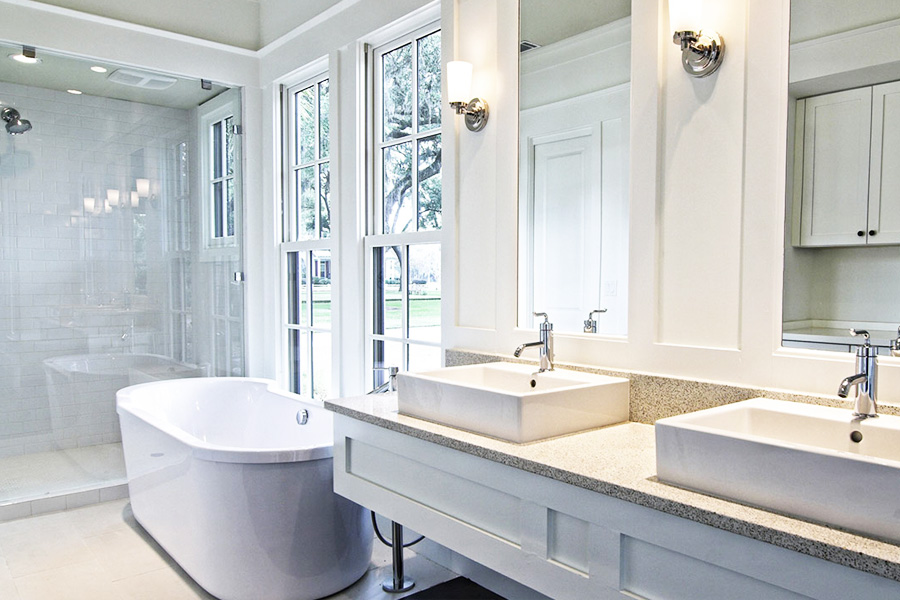
Sustainable Plumbing Options for a Greener Home
In today’s world, the quest for a more environmentally friendly lifestyle has become a top priority for many. One area often overlooked in this pursuit is plumbing. Sustainable plumbing options not only help reduce your carbon footprint but also enhance the efficiency and longevity of your home’s plumbing system. By making informed choices, you can contribute to a healthier planet while potentially lowering your utility bills.

What Are Sustainable Plumbing Options?
Sustainable plumbing options encompass a range of practices and products designed to minimize water usage and waste. These include water-efficient fixtures, eco-friendly materials, and innovative technologies that reduce the environmental impact of your plumbing system.
Why Choose Sustainable Plumbing?
Opting for sustainable plumbing options offers numerous benefits. Firstly, it conserves water, a precious resource that is becoming increasingly scarce. Additionally, it reduces energy consumption and lowers your utility bills. By using eco-friendly materials, you also minimize the risk of harmful chemicals leaching into your water supply.
Water-Efficient Fixtures
One of the simplest ways to adopt sustainable plumbing is by installing water-efficient fixtures. These include low-flow toilets, faucets, and showerheads. According to the Environmental Protection Agency, replacing old fixtures with WaterSense labeled products can save the average family up to 700 gallons of water per year. For more tips on toilet water waste solutions, visit The Good Home.
Eco-Friendly Materials
Choosing plumbing materials that are both durable and eco-friendly is crucial. Copper and PEX piping are excellent choices as they are recyclable and have a long lifespan. Moreover, using non-toxic sealants and adhesives further ensures that your plumbing is safe for both your family and the environment.
Innovative Technologies
Technology plays a significant role in sustainable plumbing. Smart water meters and leak detection systems can help you monitor water usage and identify leaks before they become major issues. Additionally, rainwater harvesting systems and greywater recycling can greatly reduce household water consumption.
Implementing Sustainable Plumbing in Your Home
Transitioning to sustainable plumbing requires careful planning and consideration. Start by assessing your current plumbing system and identifying areas for improvement. Consulting with a professional plumber can provide valuable insights and recommendations tailored to your specific needs.
Green Bathroom Ideas
Your bathroom is one of the best places to start implementing sustainable plumbing options. Consider installing low-flow fixtures and using eco-friendly materials for renovations. For more ideas, check out how to create a green bathroom on The Good Home.
Kitchen Plumbing Solutions
The kitchen is another area where sustainable plumbing can make a significant impact. Install energy-efficient appliances and fixtures, and consider using a water filtration system to reduce bottled water usage.
Outdoor Plumbing Considerations
Don’t forget about your outdoor plumbing needs. Drip irrigation systems and rain barrels can help you maintain a lush garden while conserving water. Additionally, using permeable paving materials can reduce runoff and improve drainage.
Challenges and Solutions
Adopting sustainable plumbing options can present certain challenges, such as upfront costs and limited availability of eco-friendly products. However, the long-term benefits, including cost savings and environmental impact, far outweigh these initial hurdles.
Overcoming Cost Barriers
While sustainable plumbing solutions may have higher upfront costs, they offer long-term savings through reduced utility bills and increased property value. Consider exploring government rebates and incentives for installing water-efficient fixtures and systems.
Finding Reliable Products
As the demand for sustainable plumbing options grows, so does the availability of eco-friendly products. Research and choose reputable brands that prioritize sustainability and quality. For a stylish and sustainable bathroom remodel, visit Schicker Luxury Bath.
The Future of Sustainable Plumbing
The future of plumbing is undoubtedly moving towards more sustainable practices. Innovations in technology and materials continue to evolve, offering new possibilities for eco-friendly home improvement. As awareness and demand for sustainability grow, the plumbing industry will likely see increased adoption of these practices.
Embracing Change
As a homeowner, embracing sustainable plumbing options allows you to play a part in preserving the environment for future generations. By making informed choices and implementing eco-friendly practices, you contribute to a healthier planet and a more sustainable future.
Staying Informed
Staying informed about the latest trends and technologies in sustainable plumbing is essential. Regularly review your plumbing system and consider upgrading to more efficient options as they become available. For more information on bathroom humidity control, head to The Good Home.
Conclusion
Incorporating sustainable plumbing options into your home is a powerful way to make a positive impact on the environment. By choosing water-efficient fixtures, eco-friendly materials, and innovative technologies, you can significantly reduce your household’s water usage and energy consumption. Remember, every small step counts towards a greener future.

FAQ Section
What are the benefits of sustainable plumbing?
Sustainable plumbing helps conserve water, reduce energy consumption, and minimize harmful chemicals in your water supply. It also offers long-term cost savings through lower utility bills.
How can I start implementing sustainable plumbing in my home?
Begin by assessing your current plumbing system and identifying areas for improvement. Consider installing water-efficient fixtures, using eco-friendly materials, and exploring innovative technologies.
Are there financial incentives for sustainable plumbing?
Yes, many governments offer rebates and incentives for installing water-efficient fixtures and systems. Check with local authorities for available programs.
This article contains affiliate links. We may earn a commission at no extra cost to you.